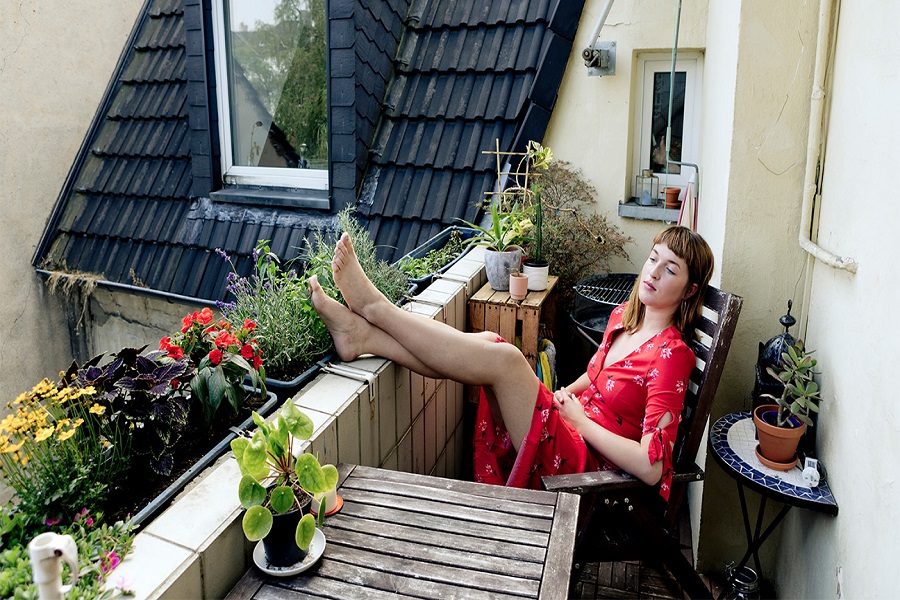- Social distancing includes several measures that can slow down the spread of COVID-19 to prevent hospitals from becoming overwhelmed with sick individuals.
- Experts say since the virus that causes COVID-19 is spread from person to person through physically close social contacts, the best approach to prevention right now is to keep people from being in close contact as much as possible.
- It’s critical that everyone practices social distancing, not just those who are sick.
As the United States experiences widespread school closures and governmental orders to close public places that attract crowds, you’re likely to hear the term “social distancing” several times a day.
Social distancing includes several measures that can slow down the spread of COVID-19 to prevent hospitals from becoming overwhelmed with sick individuals. If the novel coronavirus is allowed to spread, unchecked by social distancing, there might not be enough beds in intensive care units for all the people that need them.
“Social distancing is a complicated way of saying stay away from people, and the microbial residue that people might have accidentally left behind,” said Malia Jones, a social epidemiologist at the University of Wisconsin in Madison who studies how people’s behaviors contribute to outbreaks of infectious disease.
“Since the virus that causes COVID-19 is spread from person to person through physically close social contacts, the best approach to prevention we have right now is to keep people from being in close contact as much as possible,” she explained.
“I’ve been calling social distancing ‘cocooning’ to promote the idea that you should be at home in a safe harbor with your family,” Jones said.
It’s critical that everyone practices social distancing, not just those who are sick, Jones told Healthline. This can help vulnerable populations, like older adults, from getting the virus. Due to delays in testing and the ability for someone to have and spread COVID-19, even if they appear healthy, it’s currently impossible to know who has it.
“Social distancing is a responsibility that individuals take on to make sure they’re not the vector of disease and to break the chain of transmission,” said May Chu, PhD, a clinical professor in the department of epidemiology at the Colorado School of Public Health in Aurora, Colorado.
How to practice social distancing
Stay home
“In a nutshell, stay at home except for essential errands,” Jones stated.
This goes for those who feel healthy, too. “Many cases are very mild or asymptomatic. But you can still give it to someone else even if you don’t feel sick yet,” she said.
Avoid all crowded places or events
Cancel any gatherings that involve members outside your household or “cocoon.” It’s possible that another household, such as that of immediate family, are also part of your small circle. If so, everyone in the cocoon needs to avoid social contact outside this circle and maintain a high level of personal hygiene.
Stay 3 to 6 feet away from people outside of your own family
“The recommendation is to be 3 to 6 feet away from other people, and to preferably be outside,” where transmission risk is lower, said Thomas Jaenisch, PhD, an infectious disease epidemiologist and associate professor at the Colorado School of Public Health. While 3 to 6 feet is distant enough if it’s for a minute or so, “If you’re in a closed room and have a meeting for an hour, that’s a different story” and should be avoided, Jaenisch said.
Wash your hands often for 20 seconds, and don’t share items with people outside your cocoon
“To avoid getting anything [such as the virus] that was sneezed onto a table or door handle onto your hands, and then ultimately into your mouth and nose, wash your hands often, especially before you eat and as soon as you get home from being outside,” Jones said.
Do I need to practice social distancing if I’m symptom-free?
We asked experts to clarify exactly how to practice social distancing in common scenarios to avoid spreading or contracting COVID-19. For some situations, experts have clear answers. But for others, the science isn’t yet available, so it’s responsible to err on the side of greater caution.
Overall, experts agreed the situations below were generally not essential. “All of these things, like going to the gym, riding public transportation — all of that fuels the epidemic,” Jaenisch said.
Can I schedule play dates for my kids?
“Keep your children home from school, and don’t let them mix with other kids outside your cocoon. School closures are especially important because even though children aren’t at particularly high risk for getting sick from COVID-19, they can still be carriers [and spread illness],” Jones explained.
Can I go to restaurants and bars?
Many cities already have restrictions in place. “If there’s a government request to [stop going to these establishments] for high concern, we should all follow those rules and not go. It’s not prudent,” Chu said.
“If it’s not mandated yet, but you can anticipate [the mandate] coming, I wouldn’t go just to [dine out] one more time before everything closes. If you do dine out for whatever reason, it is safest to sit outside and ensure a lot of space between. “I’d say inside is more dangerous than outside,” Jaenisch said, noting that takeout is a much safer option.
Can I visit my older parents or grandparents?
In some cases, assisting older family members is essential. But purely for a social visit, Jaenisch suggested being cautious and avoiding physical contact with older adults for at least the next few weeks.
“One of the main aims right now is to keep the elderly safe because these are the people who are most vulnerable,” and can end up with serious symptoms, he said. Call or FaceTime your family instead.
Can I go to the gym?
It’s not responsible to go to the gym right now. Gyms are often crowded, enclosed spaces where people are touching the same equipment over and over without disinfecting it. Since the virus can live on metal or plastic surfaces up to 3 days, it’s best to exercise elsewhere.
Going outside or meeting a friend for a hike, while maintaining distance, are safer activities, according to Jaenisch.
Can I have a few friends over for game night?
Only if they’re in your inner circle. Keep it to smaller circles that always interact with each other — and even better, only each other, said Jaenisch.
Can I keep dating?
Not in person. You can still message people during this time, but wait 2 to 6 weeks to meet new people in person. “Be overcautious right now,” Jaenisch said.
Stay in touch to avoid loneliness
“We’re social beings by nature. We thrive on social connectedness,” said Jenn Leiferman, PhD, director of the Rocky Mountain Prevention Research Center and associate professor of community and behavioral health at the Colorado School of Public Health.
“As much as social distancing is very important right now for the health and welfare of our country, it’s also very important that people still figure out ways to be connected to reduce the likelihood of social isolation and loneliness,” Leiferman said. She recommends staying connected with phone calls, video chats, and social media.
Source: healthline

